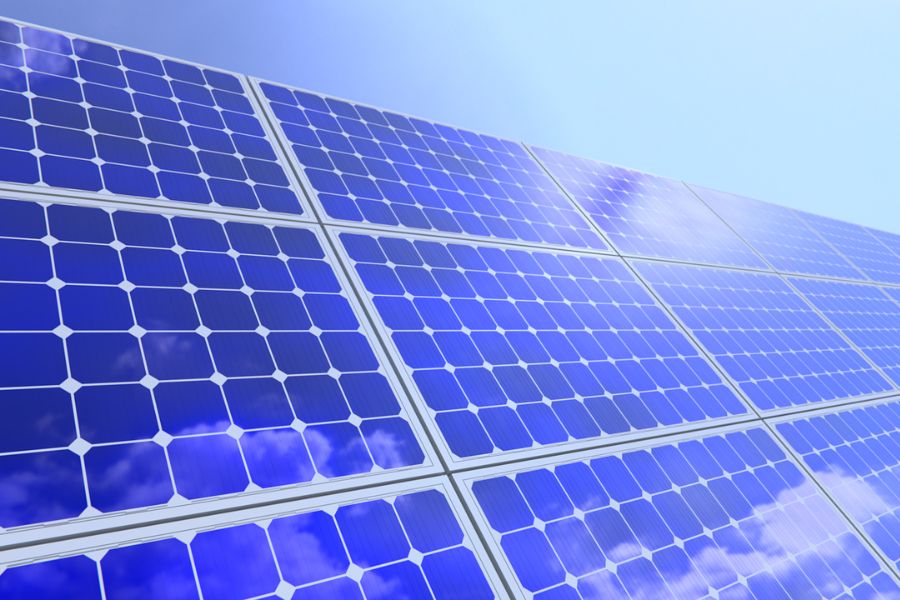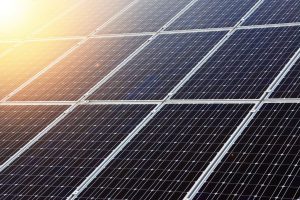What is the photovoltaic effect and how can our society benefit from it? Read on and find out!
Photovoltaic solar energy is a type of renewable energy with great potential in our country thanks to the number of hours of solar radiation that we enjoy each year.
It has many well-known advantages. One of the most significant is that, unlike other energy sources whose reserves are finite and localised (such as coal, gas, oil or nuclear energy), the sun’s energy is inexhaustible and available all over the world.
These characteristics make photovoltaic energy an excellent option for achieving a sustainable and environmentally friendly energy system that allows ongoing development without jeopardising the energy needs of future generations. This is achieved, to a large extent, by using solar self-consumption installations.
What is the photovoltaic effect?
Photovoltaic energy harnesses the sun’s energy and converts it into electricity using photovoltaic panels. But have you ever wondered how this process takes place?
It is all due to the so-called “photovoltaic effect“, a concept coined and defined by Alexander Edmond Becquerel in 1878.
According to Becquerel, the photovoltaic effect is “the production of an electric current caused by the physical interaction of two parts made of different materials, which, in turn, are exposed to electromagnetic radiation“, such as sunlight.
The French physicist came to this conclusion while experimenting with an electrolytic battery with platinum electrodes. He noticed that the current increased in one of the electrodes if it was exposed to the sun.
Years later, the photovoltaic effect would be used to transform the sun’s radiation into electricity, giving rise to what we now know as photovoltaic solar energy.
How is the photovoltaic effect obtained?
The photovoltaic effect converts solar radiation into electricity by using a material that absorbs the photons and then emits electrons that move and change positions with each other. The movement of the electrons then produces an electric current.
As you may well know, all matter is made up of atoms that contain differing amounts of electrons in their outer shell. These electrons allow the formation of bonds between the atoms, thus forming different structures. The amount of electrical conductivity depends on the mobility of these bonds.
To generate photovoltaic energy, we use semiconductor devices called photovoltaic cells. These cells contain crystalline silicon and phosphorus, two semiconductor materials that are ionised by the sun’s rays and release electrons as a result. In the first material, they occur in clusters made up of several crystals, and, in the second, as a disordered crystalline lattice.
When the panels’ photovoltaic cells capture solar radiation in the form of photons, electrons are released and they circulate continuously throughout this material. This is due to the presence of an electrical field generated by combining the photovoltaic cell with two areas of semiconductor material with opposite electrical charges: one with a negative charge (an excess of electrons) and the other with a positive charge (a lack of electrons). In this way, the flow of electrons passes from one layer to the other.
Let’s consider a more visual example:
Imagine a photon coming into contact with a photovoltaic cell. When an electron is created, that atom leaves a gap waiting to be filled, producing what we know as electrical charges. When electrical charges are produced continuously, we can extract them and use them for our benefit. However, for this to happen there must be an electrical field with continuous polarity that will distribute the electrons in an opposite direction to the gaps that appear, thus generating the movement or electrical current.
The photovoltaic effect and photovoltaic panels: benefits and usage
In order for the photovoltaic effect to be functionally effective, photovoltaic cells must be arranged in sequential rows along the solar panels.
However, these cells don’t function individually; they are connected together to create basic modules or blocks which, in turn, form the solar panels and make it possible to achieve sufficient voltage to generate electricity.
Nevertheless, not all photons are capable of providing the energy needed to release an electron. Moreover, the photovoltaic effect only occurs when a photon that provides sufficient kinetic energy comes into contact with the material and, on penetrating the material, collides with another electron, thus creating an “electron hole”. This means that some photons lose some of their energy, don’t reach the panel directly, and cannot complete this process.
This is why the photoelectric effect differs, depending on whether the panels receive solar radiation directly or indirectly.




